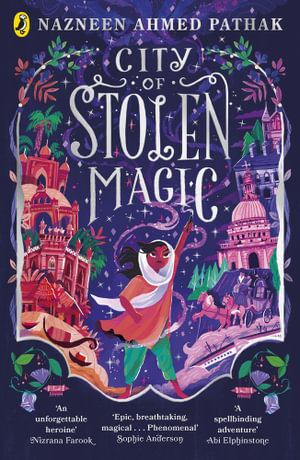City of stolen magic by Nazneen Ahmed

For teachers wanting to deliver the cross curricular priority Studies of Asia layer of the Australian school curriculum, finding literature for children that portrays the Asian perspective is quite difficult. Nazneen Ahmed Pathak's debut novel City of stolen magic is a recommended novel to add to library collections as it delivers an atmospheric, magical adventure that is distinctly Asian and particularly Indian. Reminiscent of Salman Rushdie's powerful Haroun and the sea of stories, City of stolen magic could fit the phantasmagorical sub-genre which, to children, means very strange - like something in a dream.
Pathak is a British Bangladeshi writer and historian with an interest in the geography and history of migration. Hence migration is one of the underlying themes of City of stolen magic and is reflected in the movement of the four magic children at the centre of the story and their adventures travelling from India to London and on their arrival living amongst the migrant communities in the dock areas. Clive Devayne's sinister trading company is the (thinly veiled) East India Company and it represents much that was evil about colonialism and the effect of British rule on India. Through this rich mining of the history of the extraction of goods and labour from India and of real historical characters, events and objects is wound an atmosphere and story of Asian magic - of djinn's and amulets and magical powers residing in particular beings.
The main character, Chompa - an outspoken, courageous and magical child - moves through settings from rural Bengal to Dacca, to the ocean voyage to London and the silver palace in the search for her kidnapped mother. Map illustrations (by Romanian artist Lia Visirin) of Dacca and the docks area of London help the reader establish a sense of place. Chompa encounters treachery and dangerous challenges as she hones her magical powers.
City of stolen magic offers the Middle year reader a story that is historically accurate although fictitious. The characters are believable and the language is authentic. Most importantly, City of stolen magic brings under-represented voices from the sub continent and in addition a heroine with alopecia universalis - an appearance- changing condition - a proudly different looking heroine - the story book equivalent of Danny Choo's Smart dolls that are similarly designed to represent diversity and unique identity.
There is a lot of depth and new experience on offer to the reader of Pathak's City of stolen magic.
Themes: India-colonialism, Migration, Magic, Appearance-changing medical conditions.
Wendy Jeffrey